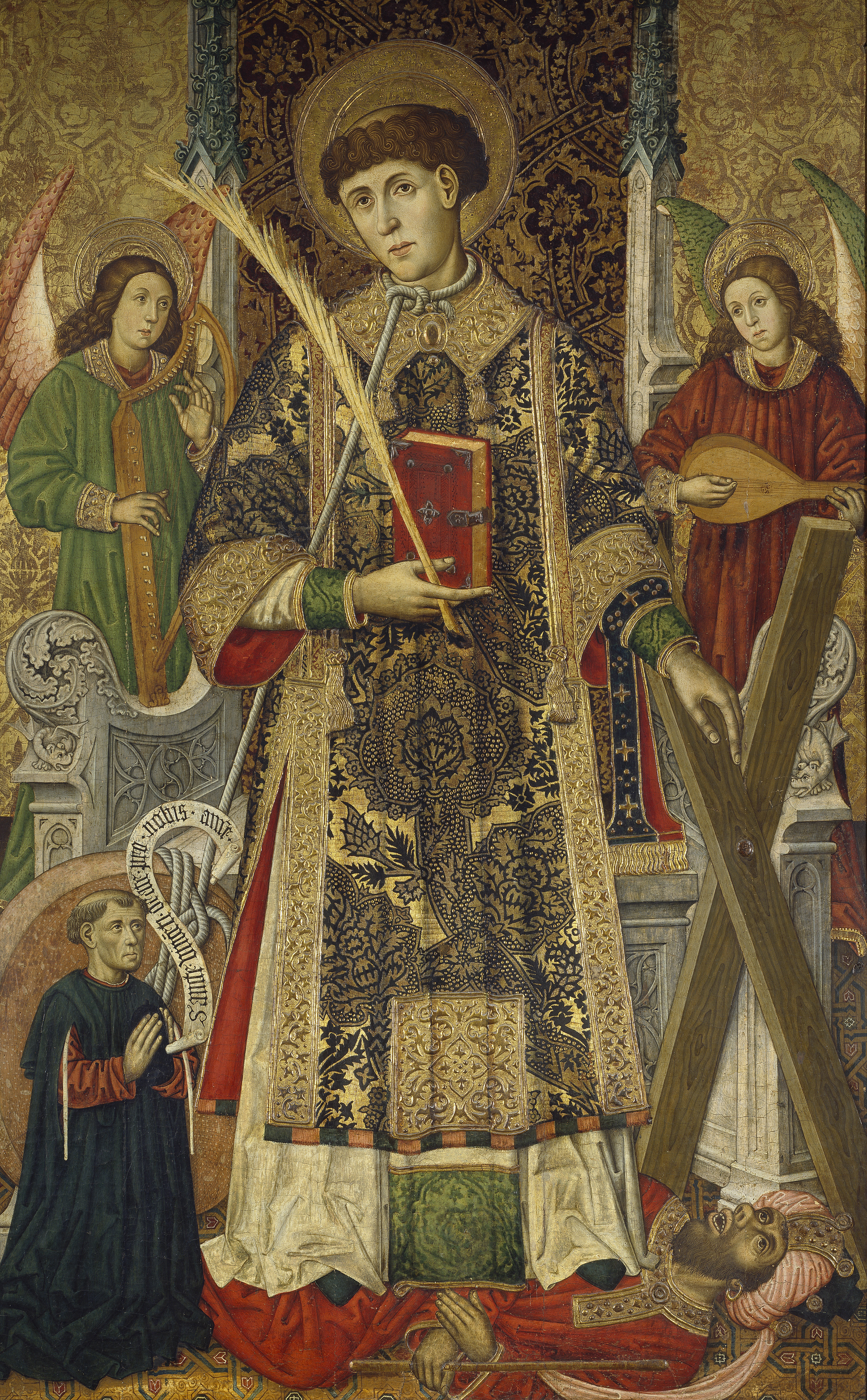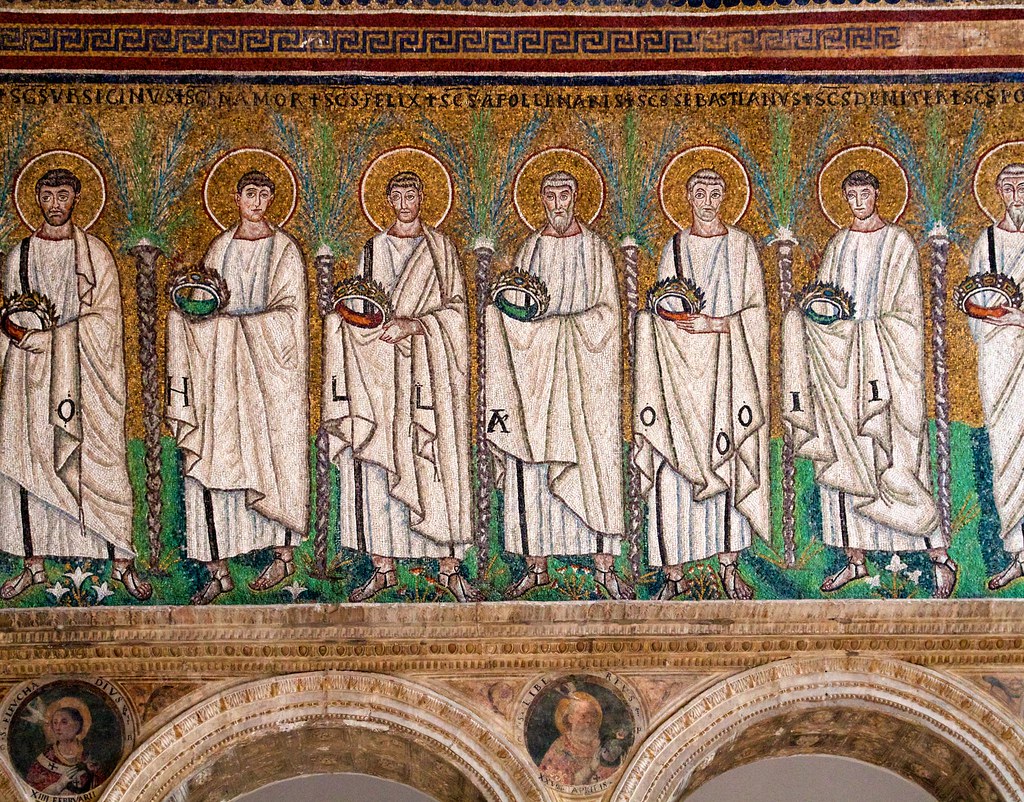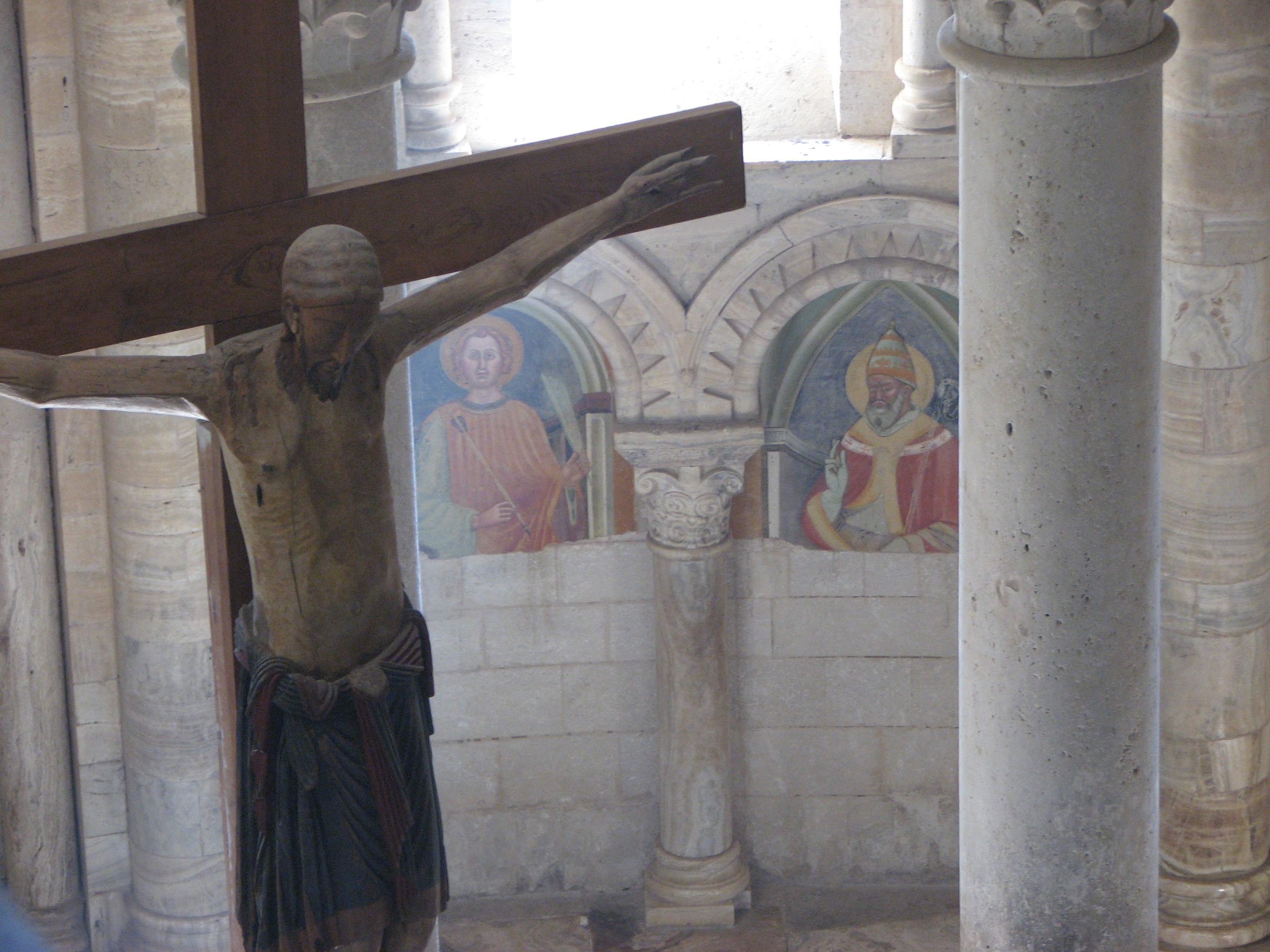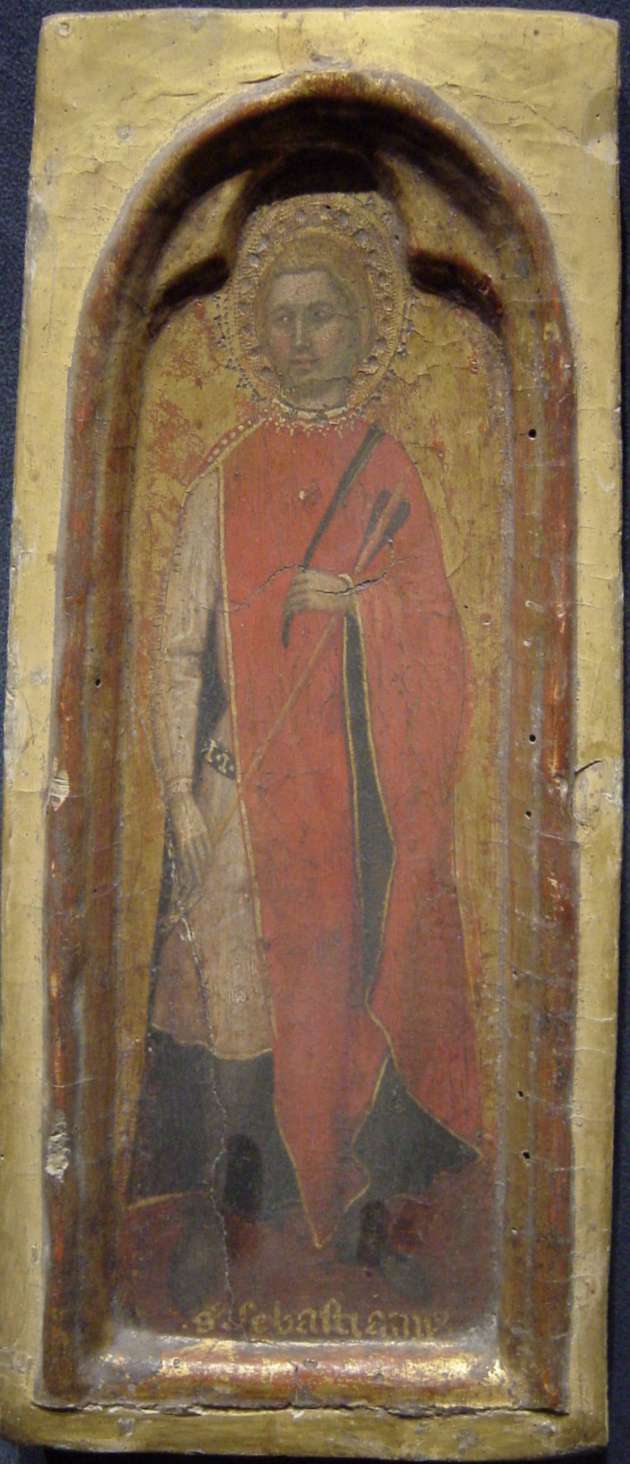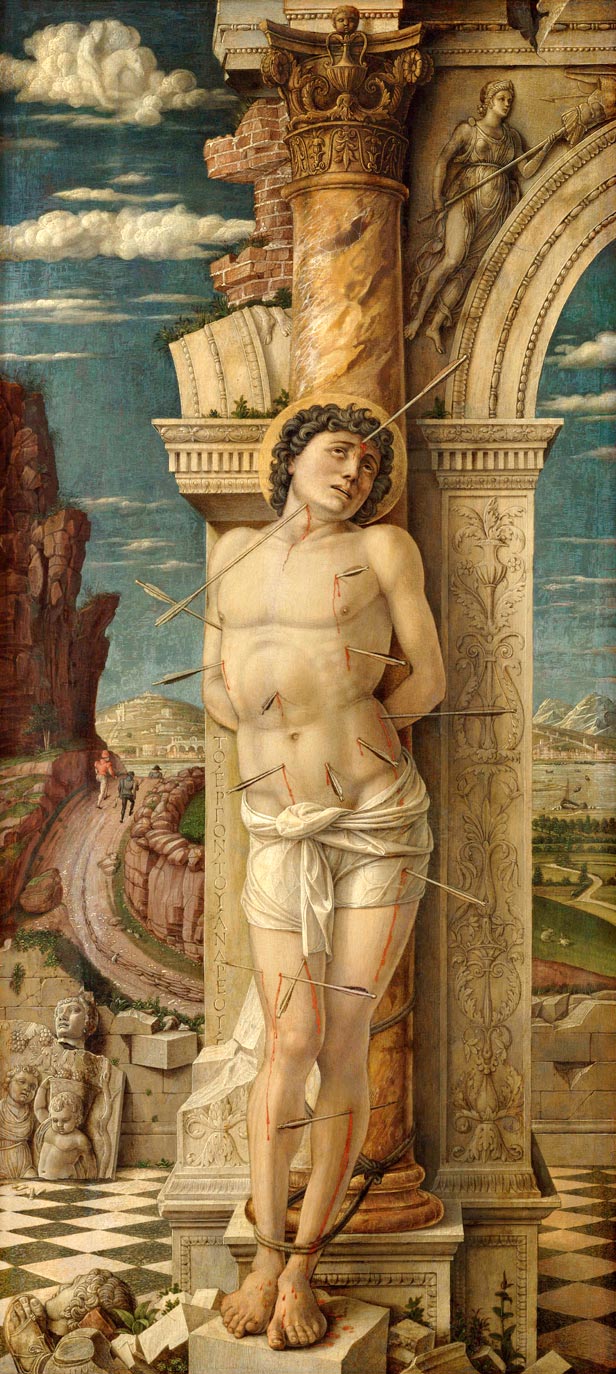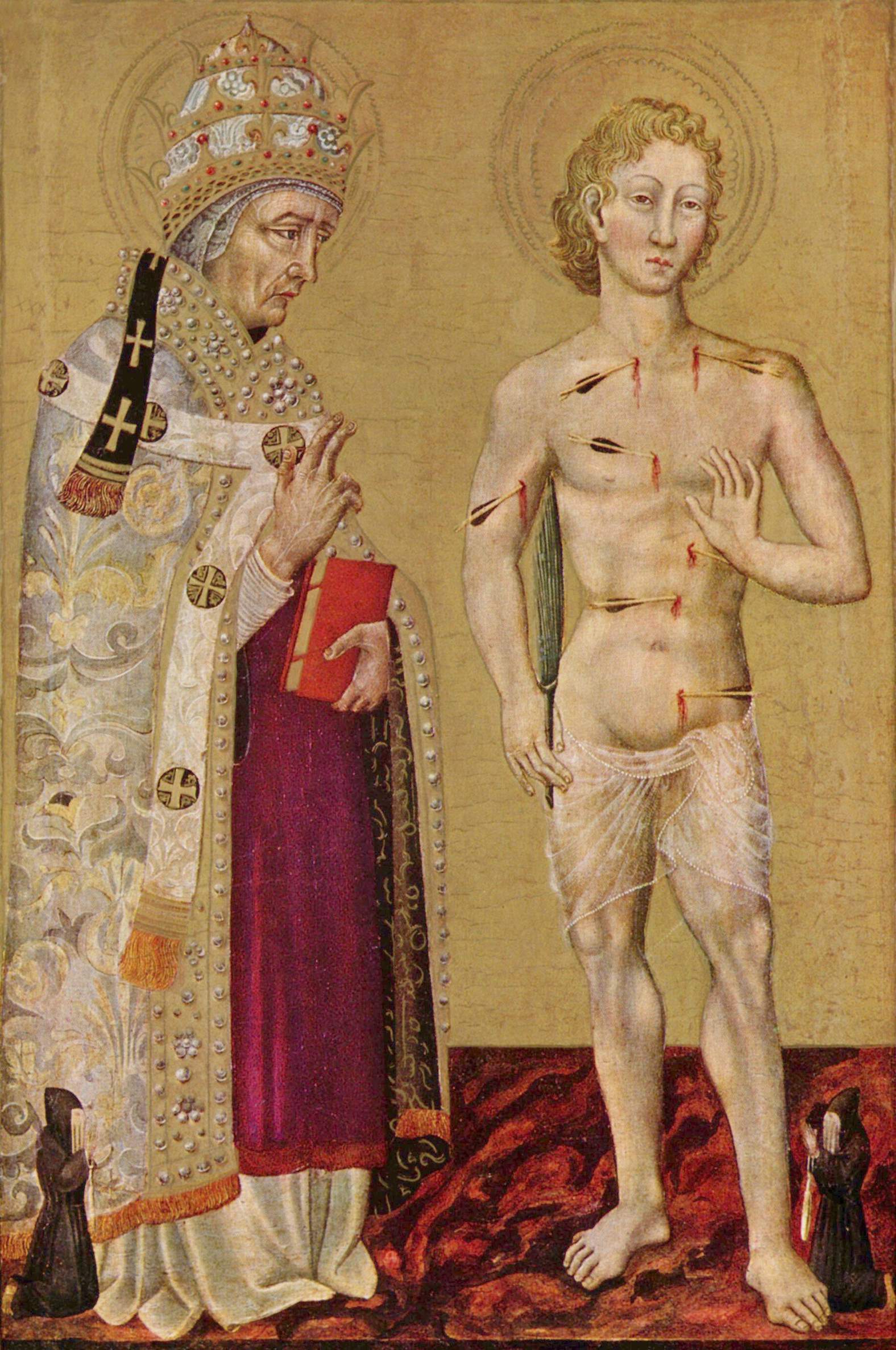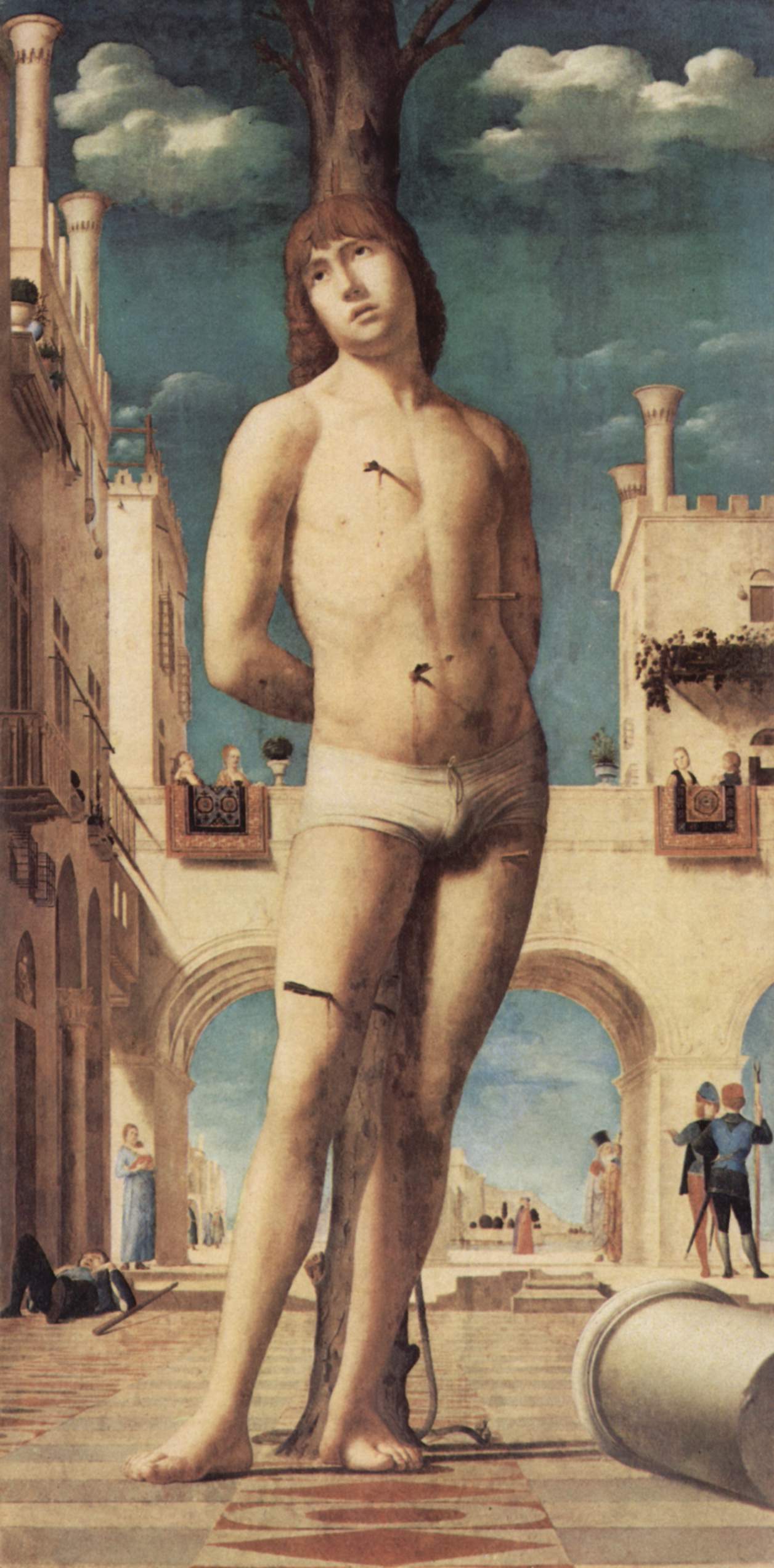Being based in Oxford it seems only appropriate when offered by John Dillon via the Medieval Religion discussion group a series of images of St Sebastian to share them with readers on this the feast of the name saint of Lord Sebastian Flyte, the second son of the late Marquess of Marchmain.
Some of the later paintings reflect the choices made in the Italian renaissance by artists and patrons to depict the almost nude male form, as opposed to earlier traditions of representing St Sebastian, and do have, dare I suggest it, something in them of homoerotic sado-masochism - you can't say the Clever Boy fails to cater for all tastes amongst his readers.
Here is John's selection together with his introductory note:
The Roman martyr Sebastian (d. 3d cent.?) is first documented in
the
Depositio martyrum of the Chronographer of 354, where he is
entered under today as a martyr of the Via Appia. According to St.
Ambrose of Milan, Sebastian was a native of that city who was martyred
at Rome. His legendary Passio (BHL 7543; ineptly ascribed to Ambrose)
is our earliest source for this saint's frequently depicted attempted
execution by arrows, of which so many pierced him that -- still
according to the Passio -- he came to resemble a hedgehog. The same
account -- which is set in the the persecution of Diocletian and
Maximian and which previously had detailed his support of the twins Mark
and Marcellian and many others -- then gives a rapidly healed
Sebastian a final colloquy with Diocletian after which the saint is
clubbed to death in the Circus and his body is dumped into a nearby
sewer. Instructed by Sebastian in a vision, a Christian matron named
Lucina retrieves his body and buries it at a location in the catacombs
near the remains of the apostles (Peter and Paul, of course). When the
persecutions have ended Lucina converts her home into a church and gives
it to the church of Rome. Thus far the Passio. Lucina's church is of
course the
titulus Lucinae, the predecessor of today's San Lorenzo in
Lucina. The burial site specified in the Passio is that of Sebastian's
martyrial church on the Via Appia Antica, after several rebuildings over
the centuries today's basilica di San Sebastiano ad Catacumbas (or
San Sebastiano f. l. M.).
Some period-pertinent images of St. Sebastian of Rome:
a)
as depicted (third from right) in the heavily restored, later
sixth-century procession of male martyrs (c. 561) in the nave of
Ravenna's basilica di Sant'Apollinare Nuovo:
http://tinyurl.com/7lebx8n
b) as depicted in a probably late seventh-century mosaic portrait in Rome's basilica di San Pietro in Vincoli:
c)
as depicted (upper register, martyrdom; lower register, St. Blasius /
Blaise) in a later twelfth-century breviary for the canonesses of Seckau
(Graz, UB, cod. 832, fol. 18r):
http://tarvos.imareal.oeaw.ac.at/server/images/7009800.JPG
d)
as depicted (martyrdom) in one of four panels of a full-page
illumination in the late twelfth-century so-called Bible of Saint Bertin
(c. 1190-1200; Den Haag, KB, ms. 76 F 5, fol. 35v, sc. 1B):
http://manuscripts.kb.nl/zoom/BYVANCKB%3Amimi_76f5%3A035v_min_b1
e)
as depicted (martyrdom) in an earlier thirteenth-century collection of
saint's lives in their French-language translation by Wauchier de Denain
(between 1226 and 1250; London, BL, Royal 20 D VI, fol. 48v):
http://www.bl.uk/catalogues/illuminatedmanuscripts/ILLUMIN.ASP?Size=mid&IllID=48231
f)
as depicted (at left; St. Mary Magdalene at right) in a
mid-thirteenth-century glass window (c. 1250-1260) in the west choir of
Naumburg's Dom St. Peter und St. Paul:
g)
as depicted (martyrdom) in a later thirteenth-century Cistercian
psalter of upper Rhine origin (c. 1260; Besançon, Bibliothèques
municipales, ms. 54, fol. 15r):
http://www.enluminures.culture.fr/Wave/savimage/enlumine/irht5/IRHT_083237-p.jpg
h)
as depicted (martyrdom) in the later thirteenth-century frescoes (1278
or 1279) of Rome's chiesa di San Lorenzo in Palatio ad Sancta Sanctorum:
https://www.pemptousia.gr/wp-content/uploads/2014/12/ag.sebastianos22.jpg
A different interpretation (the BVM and St. John disporting themselves at archery?):
http://www.agefotostock.com/age/en/Stock-Images/Rights-Managed/DAE-11285236
i)
as depicted (martyrdom) in a late thirteenth-century copy of French
origin of the
Legenda aurea (San Marino, CA, Huntington Library, ms.
HM 3027, fol. 22v):
http://digitalassets.lib.berkeley.edu/ds/huntington/images//000969A.jpg
j)
as depicted (at far right, martyrdom; at centre, Sts. Mark and
Marcellian) in an earlier fourteenth-century copy of books 9-16 of
Vincent of Beauvais'
Speculum historiale in its French-language
version by Jean de Vignay (c. 1335; Paris, BnF, ms. Arsenal 5080, fol.
218v):
http://gallica.bnf.fr/ark:/12148/btv1b7100627v/f442.item.zoom
k)
as depicted (perhaps; the identifying inscription appears to have been
re-painted) in the earlier fourteenth-century frescoes (between 1335 and
1350) in the church of the Holy Ascension in the Visoki Dečani monastery
near Peć in, depending upon one's view of the matter, either the
Republic of Kosovo or Serbia's province of Kosovo and Metohija:
http://tinyurl.com/6uubsp6
l) as depicted by Nicolò Semitecolo in several later fourteenth-century panel paintings (1367) in the Museo diocesano in Padua:
1) supporting Sts. Mark and Marcellian before the e
mperors:
2) martyrdom by arrows:
3) martyrdom by clubbing; his body dumped in a sewer:
4) entombment:
The Clever Boy would ad dthat these four paintings have some lovely fourteenth century details of interest in themselves - click on the link to see them in alarger format.
m)
as depicted (at left; at right, a sainted pope) in a pair of late
fourteenth- or fifteenth-century frescoes in the ambulatory of the abbey
church of Sant'Antimo at Montalcino (SI) in Tuscany (the abbey claimed
to possess relics of Sebastian given at its foundation in 781 by Pope
Hadrian I, who supposedly had received them from Charlemagne):
n)
as depicted by Taddeo di Bartolo (martyrdom) in a remounted early
fifteenth-century fresco (ca. 1400-1410) in Naples' Museo nazionale di
Capodimonte:
o)
as depicted (martyrdom) in the Suffrages of the earlier to
mid-fifteenth-century Hours of Françoise de Dinan (ca. 1435-1450; a.k.a.
Hours of Catherine de Rohan and of Françoise de Dinan; Rennes,
Bibliothèque de Rennes Métropole, ms. 34bis [pt. 2 of ms. 15942], fol.
87r):
http://www.tablettes-rennaises.fr/app/photopro.sk/rennes/detail?docid=6834#sessionhistory-ready
http://tinyurl.com/jyek5yp
p)
as depicted by the Master of the Bodensee (second from left, after St.
Anthony of Egypt, and with St George and St Ursula) in an earlier fifteenth-century panel painting in the
Staatliche Kunsthalle Karlsruhe:
http://www.ipernity.com/doc/1654608/38630734/
q)
as portrayed in a mid-fifteenth-century head reliquary (1450) in the
Pfarrkirche St. Sebastian in Ebersberg (Lkr. Ebersberg) in Bavaria:
There is anothe rpicture of the reliquary at
https://de.wikipedia.org/wiki/Datei:Relic_of_St._Sebastian_02.JPG
r)
as depicted by Andrea Mantegna (martyrdom) in a mid-fifteenth-century
panel painting (later 1450s) in the Kunsthistorische Museum, Vienna:
s)
as depicted in a later fifteenth-century fresco in the left apsidal
chapel of the crypt of the chiesa di San Ponziano in Spoleto:
https://www.flickr.com/photos/hen-magonza/9124891102/
t)
as depicted by Sandro Botticelli (martyrdom) in a later
fifteenth-century panel painting (1473) in the Gemäldegalerie, Berlin:
u)
as depicted (at right, martyrdom; at left, p
ope St. Fabian, whose feast day also falls today) in a later
fifteenth-century panel painting (c. 1475), attributed to Giovanni di
Paolo, in the National Gallery, London:
1) Before cleaning in the 1970s (the National Gallery still calls this cleaning 'recent'):
2) After cleaning (the second image is clearer but the colours are off) :
http://tinyurl.com/yczp53u
http://tinyurl.com/ycz7ccx
The Clever Boy will add that the National Gallery website states that: Recent cleaning revealed the original upraised position of Sebastian's
hand and forearm and some twenty arrows piercing his body, most of which
had been painted out.
At the bottom in each corner is a kneeling
Brother of the Confraternity of the Misericordia, a lay brotherhood
which was devoted to the Seven Works of Mercy. The brothers, dressed in
black with white veils, are holding what may be spoons used for
collecting alms.
This is a complete votive picture - one promised
and offered in thanks for the favourable answer to a prayer - and is
probably one of Giovanni di Paolo's late works.
v)
as depicted by Antonello da Messina (martyrdom) in a later
fifteenth-century panel painting (c. 1476) in the Gemäldegalerie,
Dresden:
w)
as depicted by Andrea Mantegna (martyrdom) in a later fifteenth-century
panel painting (c. 1480) in the Musée du Louvre, Paris:
x)
as depicted (martyrdom) in the later fifteenth-century Hours of Dionora
of Urbino (c. 1480; London, BL, MS Yates Thompson 7, fol. 93v):
http://www.bl.uk/catalogues/illuminatedmanuscripts/ILLUMIN.ASP?Size=mid&IllID=6000
y)
as depicted by Giovanni Baleison (martyrdom) in a late
fifteenth-century fresco by Giovanni Baleison in the Chapelle
Saint-Sebastien, Saint-Étienne-de-Tinée (Alpes-Maritimes):
http://www.culture.gouv.fr/culture/medieval/en/b036.htm
z)
as depicted (at left; at right, St. Anthony of Egypt) in a late
fifteenth-century stained glass roundel in the Museum Schnütgen, Köln:
http://tinyurl.com/hq9nvte
aa)
as depicted (martyrdom) in a late fifteenth-century stained glass
roundel in the Musée national du Moyen Âge (Musée de Cluny), Paris:
http://therosewindow.com/pilot/Paris-Musee-Cluny/w61.htm
bb) as depicted by Cosmè Tura (martyrdom) in a late fifteenth-century panel painting (c. 1484) in the Gemäldegalerie, Berlin:
cc)
as depicted by Andrea Mantegna (martyrdom) in a late fifteenth-century
panel painting (c. 1490) in the Galleria Giorgio Franchetti alla Ca'
d'Oro, Venice:
dd)
as portrayed (martyrdom) in a late fifteenth-century silver and silver
gilt reliquary (c. 1497) from Augsburg in the Victoria and Albert
Museum in London:
In addition here are some glass images added by Gordon Plumb:
St-Nicolas-de-Port, Bay 105, 5a-7a, 5b-7b, martyrdom of Sebastian,
early 16thC.:
https://www.flickr.com/photos/22274117@N08/4127966209
and detail:
https://www.flickr.com/photos/22274117@N08/4128739542
St-Nicolas-de-Port, Bay 113, 2c-4c:
https://www.flickr.com/photos/22274117@N08/4137043660
Bourges, Cathédrale Saint-Étienne, Bay 27, Virgin and Child with
Sebastian and another saint:
https://www.flickr.com/photos/22274117@N08/4266380565













